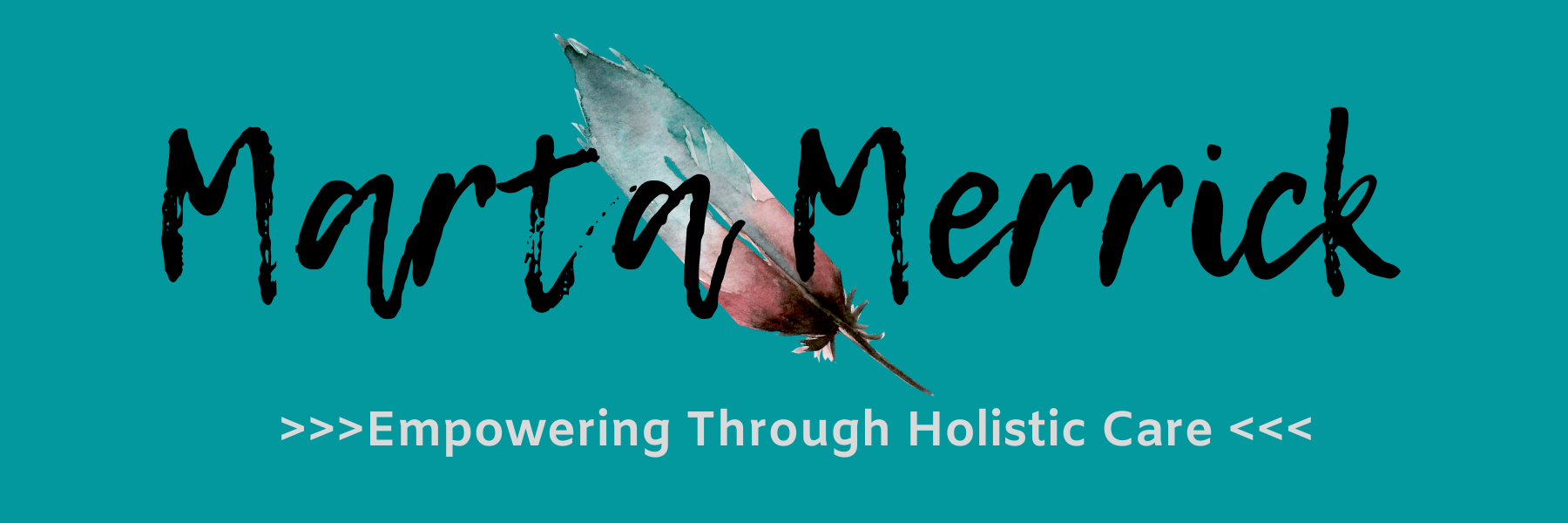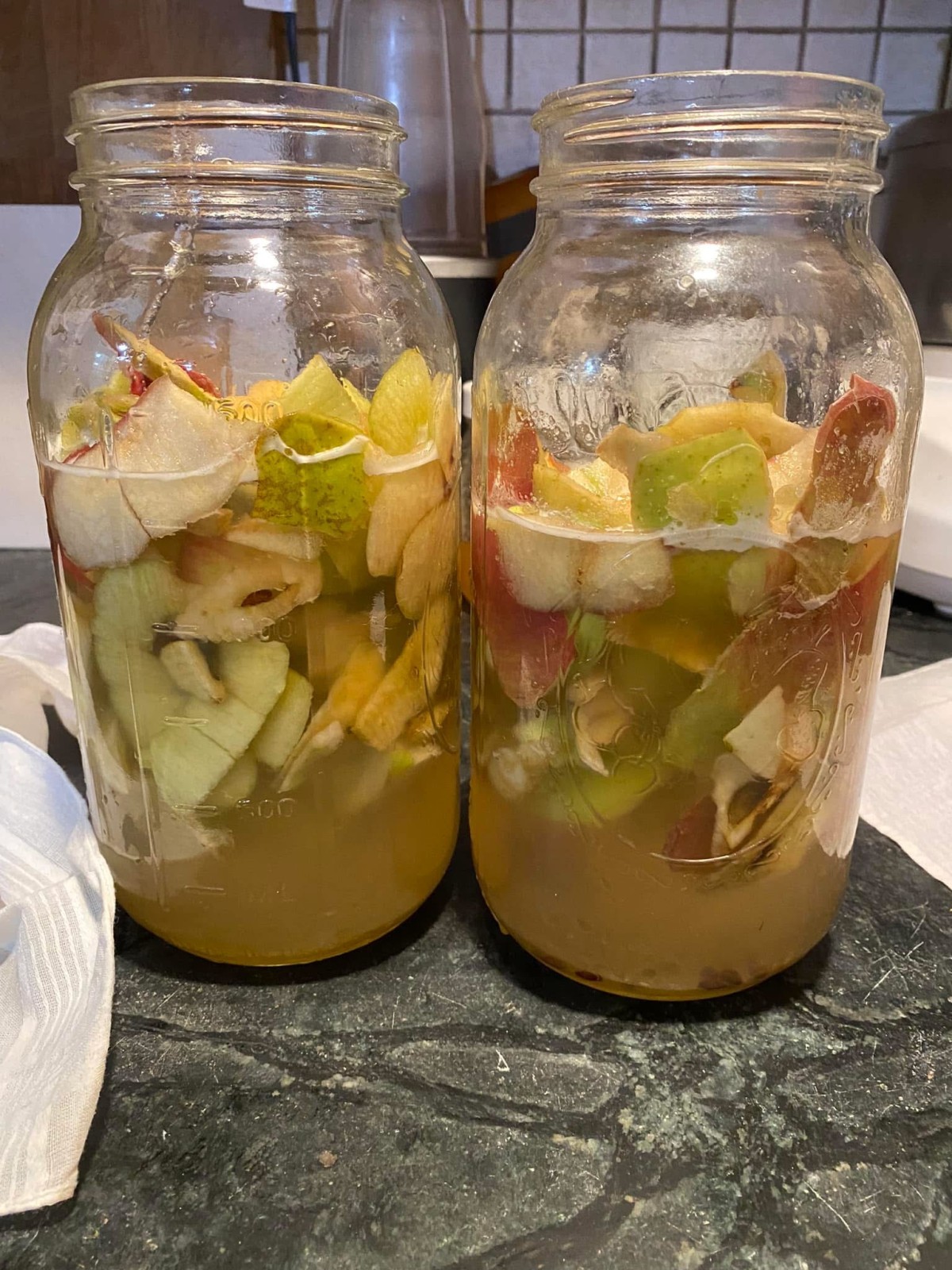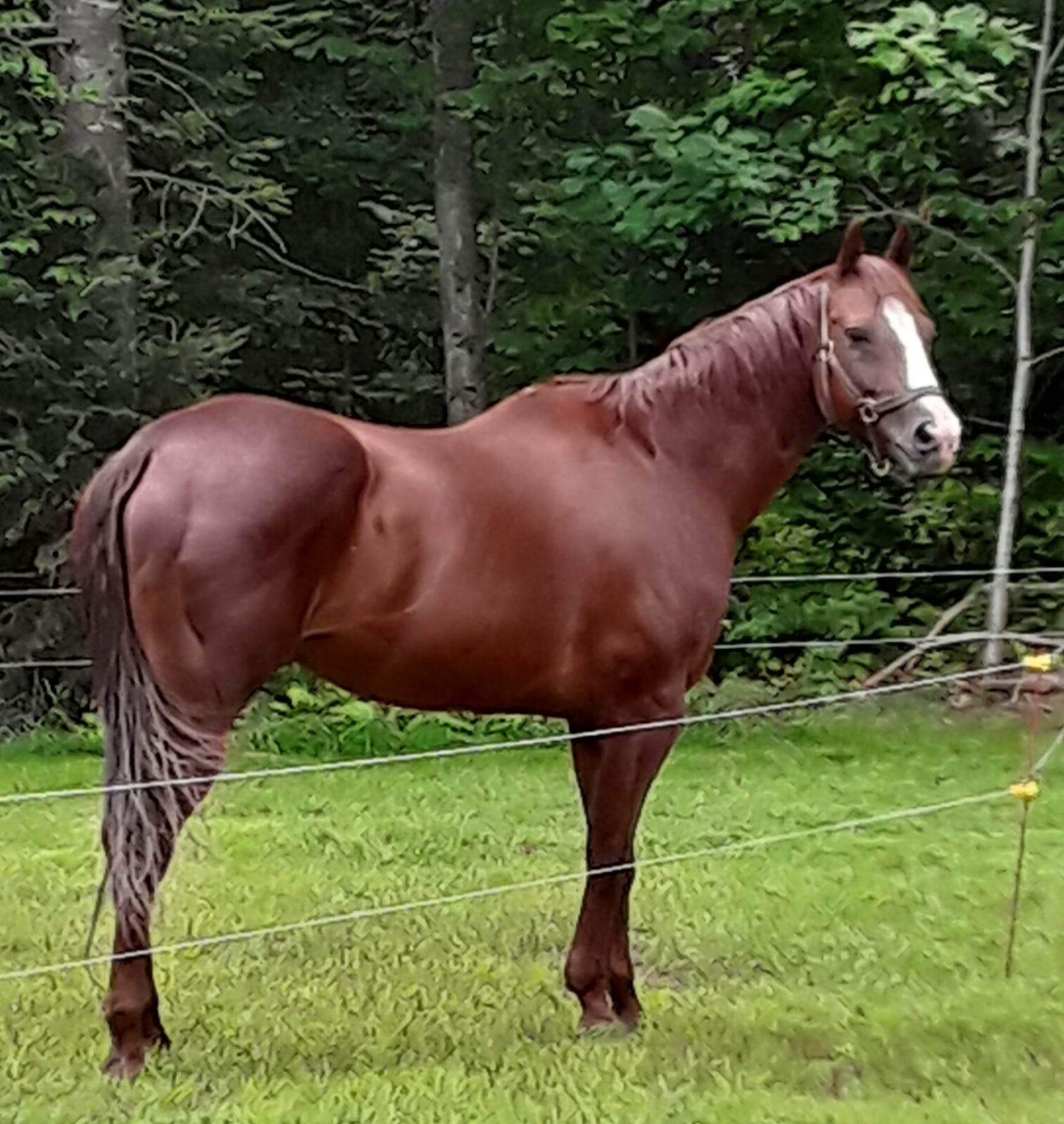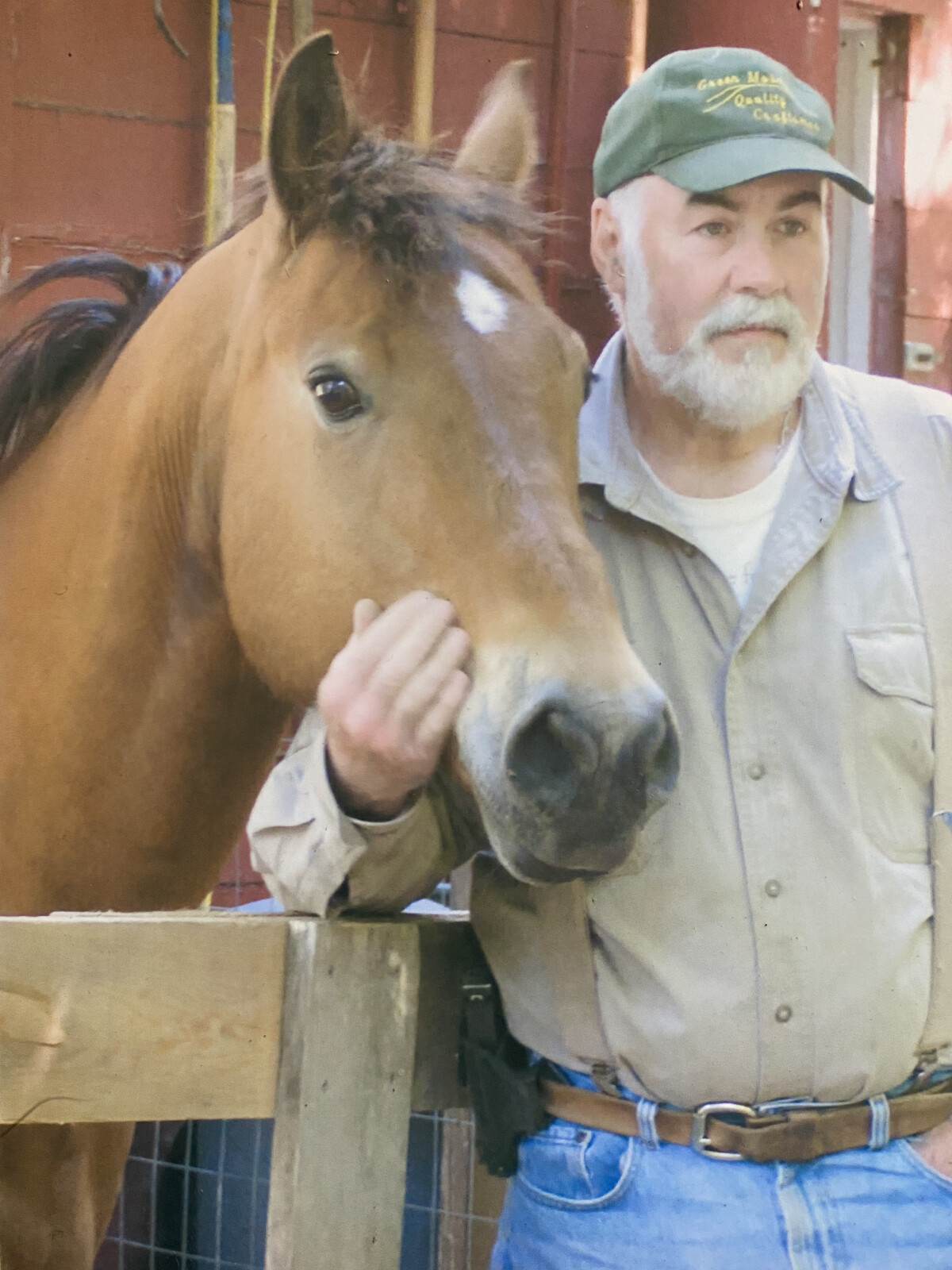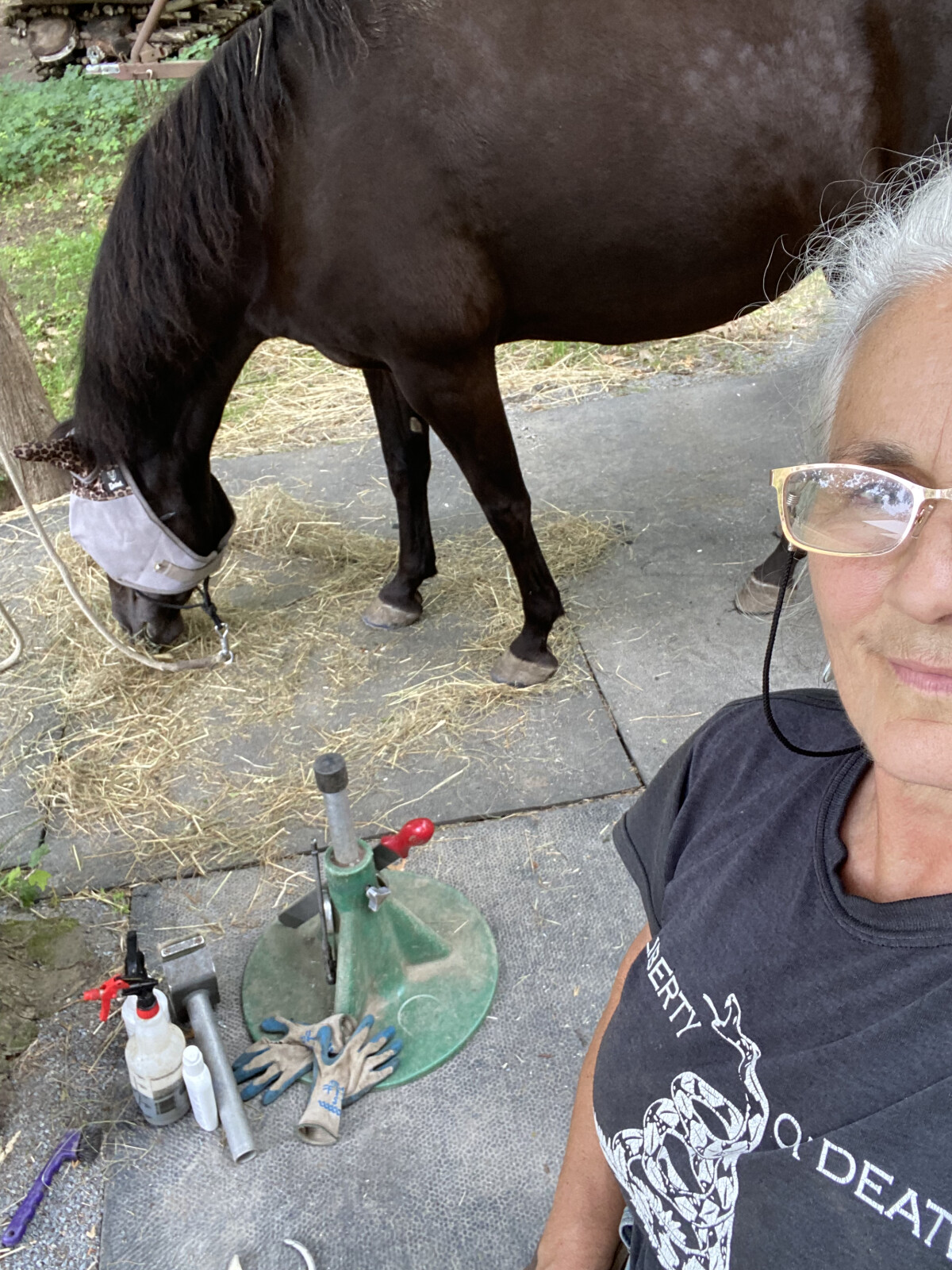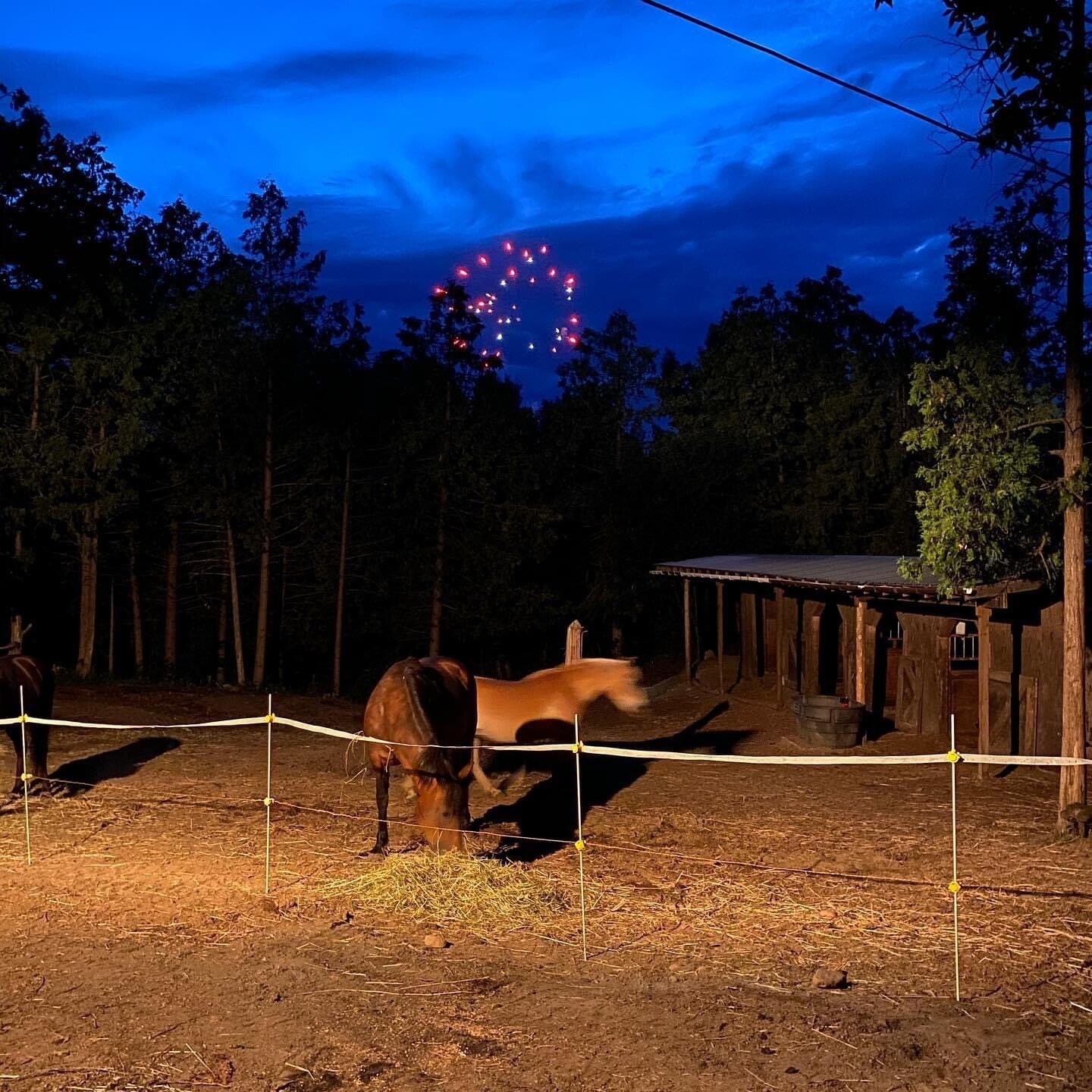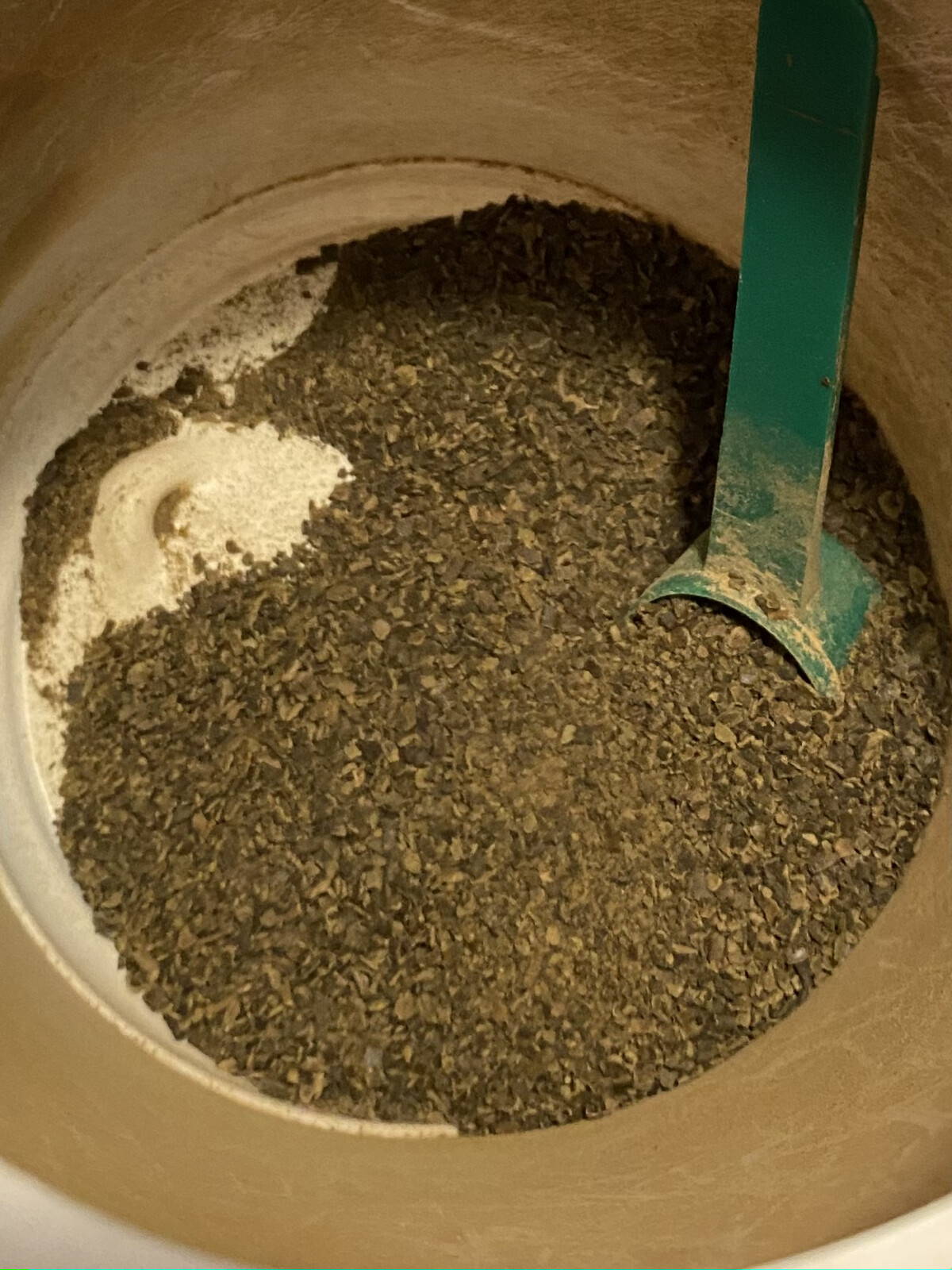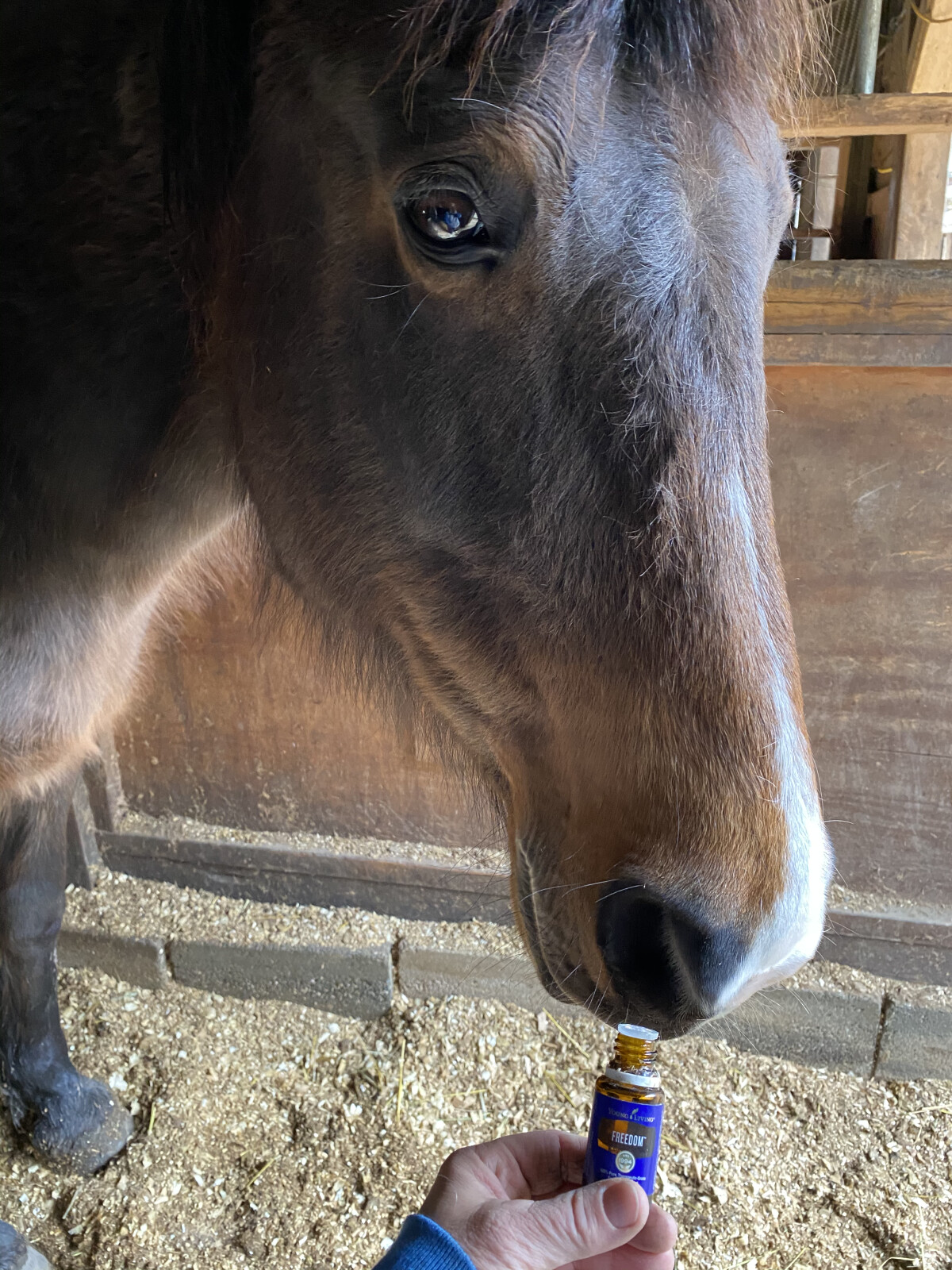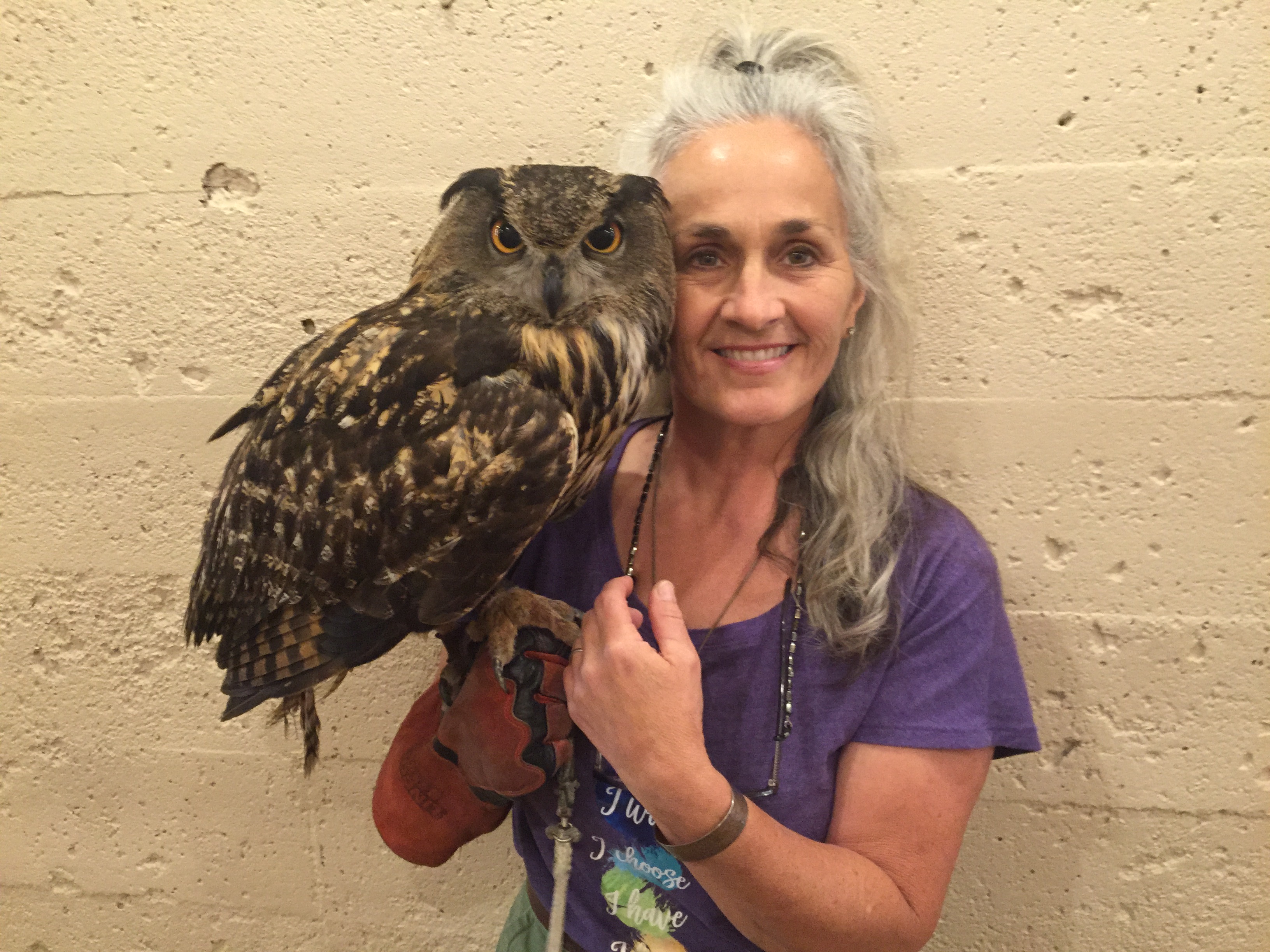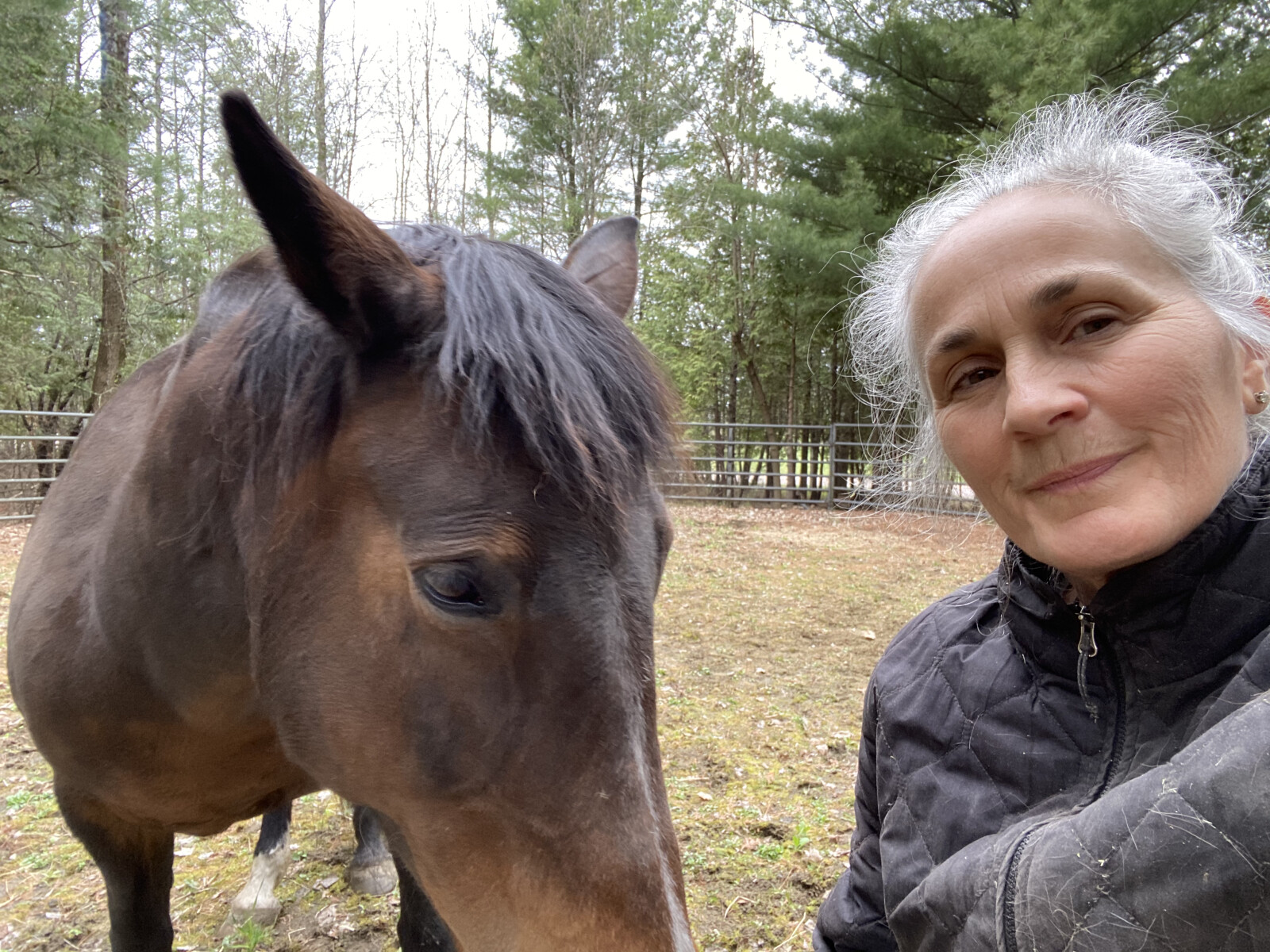
Have you ever felt intimidated, overlooked or even minimized when it comes to working with your horse's health care professionals?
Interactions like this can leave you feeling helpless, frustrated and even angry. Especially if you, as the caregiver, have some reservations about what is happening or just plain disagree! Early on I readily accepted the information from my professionals. After all, I was new to horses and was learning! But as time passed and I dove into a variety of aspects of caring for my horses, especially hoof care, there were many things I had been doing that just didn't feel right. I now had options for new, different and what I believed were better things to do. Things that felt better to me and were more closely in line with what I have for ideas on how I choose to care for my horses.
As I learned more, it became easier for me to speak up and ask questions and even disagree with what I may have been told by my professionals, who I had chosen. At some point, we must realize when and if things may not be working with that professional and seek out another who is more in alignment with our beliefs. Remember, you are the horse owner who hires the professional. You get the last word.
It is important for caregivers to realize that they are the decision makers for their horses.
Knowing we are the decision maker for our horse and actually speaking up and standing our ground, so to speak, are two very different things. For some it comes easier to speak up while others may need some help and encouragement.
Luckily, there ARE things we can do to BUILD OUR CONFIDENCE so that we feel empowered when talking with our horse's healthcare professional. The first thing to do is learn more about the various areas of our horse's care. Dive into books, watch videos, read blogs, go to seminars and webinars and learn from as many sources as you can. I can remember when I first got started I was grabbing every book and dvd collection I could get my hands on, for nutrition and hoof care! Luckily I had a great barefoot trimmer who was willing and happy to share her knowledge and resources with me.
Just having more knowledge gives us a more solid foundation from which to ask questions and feel more secure about having a conversation with a professional. Whether the topic is nutrition, hoof care, vaccinations or parasite protocols it is beneficial for you to learn that there are a variety of ways to deal with and promote good health. And you get to choose what you feel are the best ways to handle these for your horses.
The next thing to do is find and surround yourself with people who feel the same way that you do! Whether it is the barn community you choose or an online community, finding groups who align with our beliefs goes a long way to helping us feel confident in the decisions we are making. It gives us a sense that we are not alone, or crazy, for thinking and feeling the way we do. Just because it's a bit different than the "norm", doesn't make it bad or wrong. I have created an online community for exactly this kind of support and empowerment. It's called The Hearts of Horses; Empowering Through Holistic Care. Join us there if you're ready to feel empowered!
Now get started on these two tasks and see where your confidence journey takes you! I bet even your horses will notice a difference in your demeanor and energy...😉
All the best,
Marta

There were many times during my full-time trimming days that I felt like a broken record, saying the same thing over and over to clients when it came to taking care of their horses’ hooves…
Often when something is happening to our horses, we just want to make them feel better. So doing something quick, easy and topically is the norm. But there is usually more going on and if we just look a little deeper, we can get at the cause of the problem. Then take steps to remedy it.
Before we get into the solutions, let’s take a look at what is happening in the hoof in terms of an abscess. The connection between the hoof wall and internal structures is made up of laminae. These are finger-like protrusions that when healthy, have a very strong bond and hold the outer wall tight to its internal structures.
When we look at a healthy hoof, we can see smooth, tight hoof wall growing down from the top at the coronary band. When the hoof is fed well with adequate minerals it is a work of art! It is when imbalances occur that inflammation can result causing the laminae to become weak and lose their strong connection. In this weakened state, it is easy for an overgrown hoof to work as a lever to pry the wall away from the sole at ground level. When this happens, it is easy for dirt and debris to make its way up into the hoof.
If you’re a little fuzzy on some of this and would like to know and see more, check out the free workshop in my The Hearts of Horses: Empowering Through Holistic Care community. There are videos that introduce you to the parts of the hoof as well as the internal structures as shown on a mustang cadaver hoof.
In order to get at the source of the abscess issue, we must deal with the inflammation first and remove the cause of it. The number one thing, that many do not realize, is the amount of sugar in our horses' lives have everything to do with their hoof health. Finding the sugars in their hay, grass, grains, supplements, trees containing sugar in their bark within their living space, treats… and removing them will stop the inflammation. Each horse will be different in their thresholds but as their caregiver, it is up to you to figure out their specific needs.
Once the sugar has been removed, make sure your mineral levels are good. Test your hay to see what may be low or missing in your area. Feeding a good supplement is helpful (we cover this in the holistic care community too!). Feeding the hoof is everything!
Another helpful piece to this abscess puzzle is movement. A key part of helping a horse to move out of the discomfort of an abscess is to allow them to move (vs. stall rest). The more the movement, the more the blood flow, the quicker it resolves. Generally, an abscess will last 7-10 days. Set up your horse’s environment so that he is allowed to move yet protected from harm from the other horses.
A third, key piece to this puzzle is their trimming schedule. Getting your horse trimmed based upon their rate of growth and how much they self-trim is beneficial to them. Knowing when the hoof needs to be trimmed is something you must learn to recognize (check the free workshop for help here too!). This will help you to know the appropriate time frame for trimming your horse.
Learning more about the hoof so that you can have a conversation with your hoof care professional will be a huge benefit. You see your horse daily, do all their care and can recognize subtle changes in them. Being able to have a conversation with your hoof care provider about any changes will be most helpful to them for your horse’s care.
If you’re interested in learning more or would like to learn to trim your own horses, grab my course here. It will give you all the tools and information you need for you to learn to trim your own horses’ hooves. When you use the code 50off you can purchase at half price.
Finally, soaking the hoof that is experiencing an abscess. I have found soaker boots extremely helpful and easy to use. As a former EasyCare dealer, I started with the Easy Soaker and really like it. I also use an Rx boot when I need to keep things clean and covered up.
A few of the items I have found most helpful in the soaking process are Epsom Salt, Thieves Household Cleaner, an essential oil blend called Melrose for cleansing and Wintergreen to help with the discomfort. Just a ¼ cup of the salt, half a capful of the Thieves Cleaner, 4-8 drops or so of Melrose and the same for Wintergreen. Add warm water (about a quart) and pour into the boot (which is already on the foot!). I let them soak for 20-30 minutes.
A few of the items I have found most helpful in the soaking process are Epsom Salt, Thieves Household Cleaner, an essential oil blend called Melrose for cleansing and Wintergreen to help with the discomfort. Just a ¼ cup of the salt, half a capful of the Thieves Cleaner, 4-8 drops or so of Melrose and the same for Wintergreen. Add warm water (about a quart) and pour into the boot (which is already on the foot!). I let them soak for 20-30 minutes.
I hope this has been helpful for you and if you haven't already, I hope you will join us in our holistic care community.
Marta

Goin’ Bare…It’s Easier Than You Think For Your Horse To Go Barefoot!
There are, however, some key lifestyle factors that are critical to include in your horse’s life in order for the transition to be successful! First, the hooves need proper nutrients to grow in healthy, strong and well-connected, there needs to be stimulation through movement over varied terrain, you’ll need a regular trimming schedule either by a professional or by learning to trim your own horses and lastly, there will be a transition period where the hooves will need protection with padded boots.
Let’s look at nutrition first. It’s a great place to start to grow healthy hooves. One of the most detrimental ingredients that ruins more feet… is sugar! There are hidden sugars in so much of what is given to our horses. Everything from grain to supplements to treats. It is in virtually every item that goes into your horses mouth, including grass and hay! Understanding and controlling the sugar in your horses diet is going to be a major step in going barefoot with your horses. One of the easiest ways to do this is put your horse on an anti-inflammatory diet. This means you primarily feed grass hay and provide minerals needed that are not accounted for in the hay. If other feeds are needed look at whole foods like flax, chia or hemp seeds that add beneficial Omega-3’s. The important thing is to avoid processed grains and ingredients like corn, soy and molasses. There is also a supplement that I started giving mine for joint health yet realized how great it was for creating healthy, strong feet! It contains the building blocks for good skin, hair and hoof growth. You can read about it here. And if you'd like more information on the basic nutrition for your horse's needs, check out the guide I made up here.
Next you’ll want to make sure you’re encouraging your horses to move in their home environment. The hoof is a blood pumping mechanism who’s purpose is to expand and contract to pump blood back through the rest of the body. The simple act of spreading hay into multiple piles in their environment will encourage them to move and eat. Putting up a series of hay bag stations around their space will offer the same benefit as well. By incorporating this simple feature you will be encouraging the growth of healthier, stronger hooves as well as supporting a healthy digestive system! Include, in some high travel areas, abrasive terrain to help stimulate and condition the foot to grow a more dense sole and create go-anywhere hooves!
Maintaining a regular trimming cycle for your horse’s rate of growth is crucial to going barefoot. The cycle can vary depending upon your horse’s nutrition and even the amount of wear their hooves get. In some environments horses can self- maintain their hooves! For many though setting up a 4-6 week schedule to maintain a healthy foot is a good guideline. Finding a good barefoot trimmer is helpful or if you are so inclined, you can learn to do the trimming for yourself. With the help of your trimmer checking in on you, it is possible for you to learn to use a rasp and knife to maintain your horse’s hoof walls and bars. Of course there is some learning that needs to happen first and practice with guidance. Taking an active role with your trimmer right now can set you on that path. Asking questions, paying attention at your trimming sessions and in general being curious about your horse’s feet. If trimming your own horses is something you’d like to pursue, I have a go at your own pace course along with a FB support group for any help you might need. Get the course here.
Lastly, your horse will most likely need some sort of padded hoof boot protection for a period of time. This time will vary for each horse. The factors I talked about above and how well you have incorporated them into your horse’s lifestyle will have a great impact on this. Having been an Easy Care dealer when I had my practice, I am partial to them. However, the important thing here is finding a boot that fits and will stay on well while your horse is out with his herd. Boots need to be taken off daily to give the foot time to “breathe” and to check for rub spots or any other possible discomfort. Utilizing boots to protect your horses hoof and reduce any potential pain in this process will significantly impact their transition time.
Are you interested in learning more about transitioning your horse out of shoes, nutrition, booting or living a healthy, holistic lifestyle? Maybe you'd like to check out a free workshop on hooves? Its all in here... The Hearts Of Horses; Empowering Through Holistic Care
